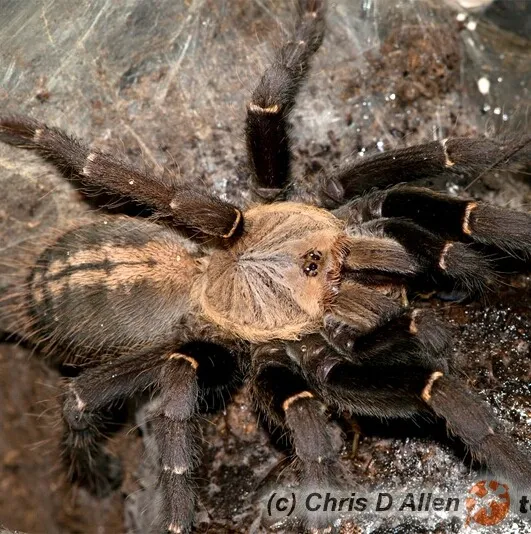What is the Sp Northern Cebu Tarantula
The Sp Northern Cebu Tarantula, scientifically known as Cyriopagopus cf. Mindanao, is a captivating and sought-after species within the tarantula world. Native to the northern regions of Cebu, Philippines, this tarantula has gained popularity among arachnid enthusiasts for its striking appearance and relatively manageable care requirements. This fascinating creature belongs to the tarantula family and is a part of the diverse ecosystem of the Philippine islands. Understanding the Sp Northern Cebu Tarantula involves delving into its origins, physical characteristics, behavior, and needs, making it an intriguing subject for both novice and experienced keepers. They are also known as Cebu Black Tarantula.
Origin and Habitat
The Sp Northern Cebu Tarantula hails specifically from the northern parts of Cebu Island in the Philippines. This tropical island environment shapes the tarantula’s needs, influencing its preferred temperature, humidity, and habitat preferences. They thrive in the humid, warm conditions typical of the region. In their natural habitat, these tarantulas typically reside in burrows, often found near or under rocks, fallen logs, or within the leaf litter of the forest floor. The abundance of insects and other small invertebrates in this environment forms the basis of their diet. The specifics of their microhabitat within the larger Cebu ecosystem highlight the importance of replicating these conditions in captivity to ensure the well-being of this species. Their location is crucial for understanding how to best care for them.
Appearance and Characteristics
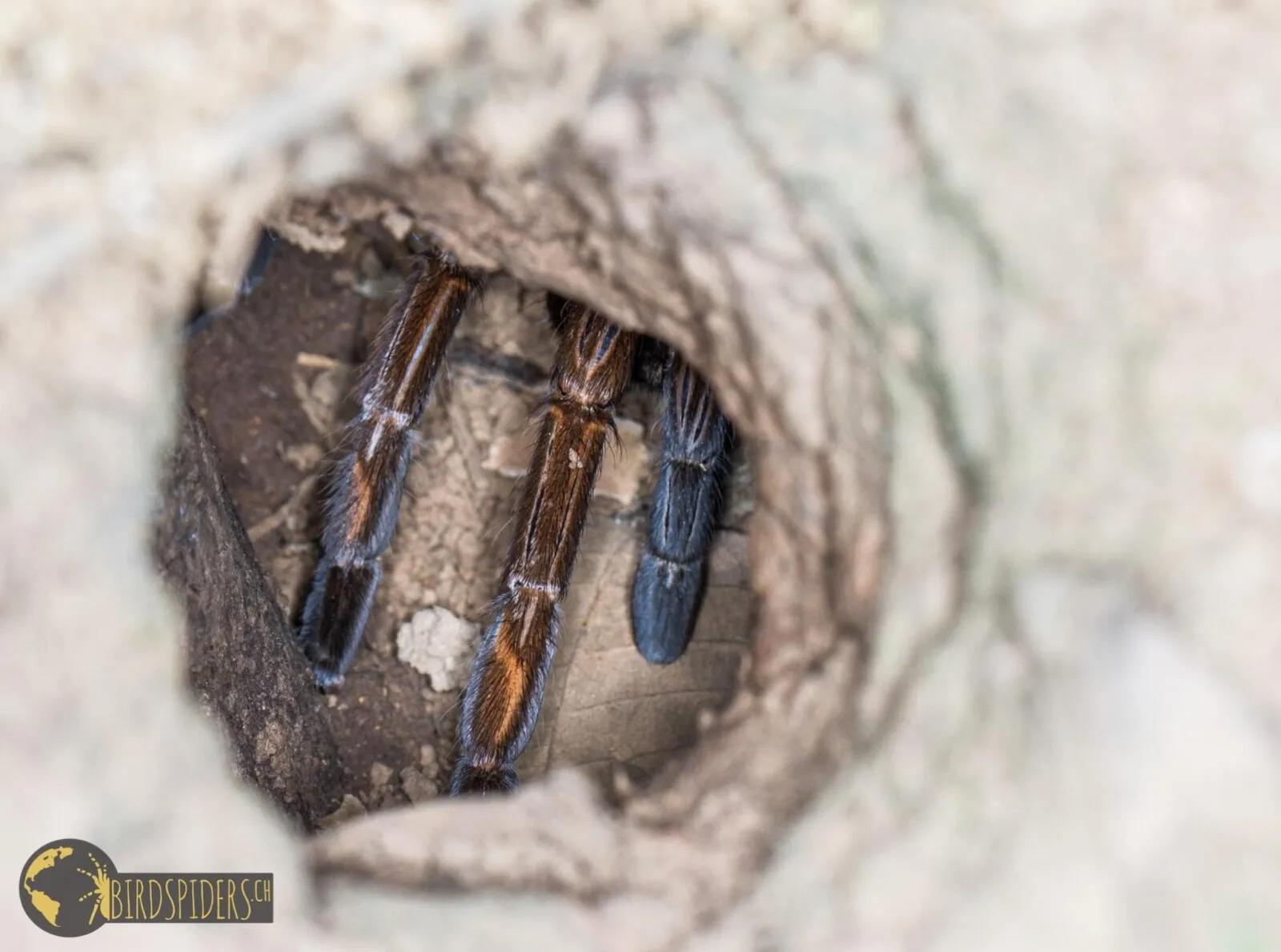
The Sp Northern Cebu Tarantula showcases a striking appearance that captivates tarantula enthusiasts. This species is characterized by its predominantly dark coloration, often a deep black or charcoal hue, which contributes to its common name, the Cebu Black Tarantula. The contrast between the dark body and its leg-span makes it a visually appealing specimen. The overall impression is one of elegance and a somewhat intimidating presence, which adds to the allure of the tarantula among keepers. Furthermore, the subtle variations in color and texture can distinguish individual specimens, adding to the unique appeal of owning one.
Size
The Sp Northern Cebu Tarantula is a medium-sized tarantula. Adult females can reach a leg span of approximately 5 to 6 inches, making them relatively substantial in size. Males are typically a bit smaller, but still impressive. This size range is crucial when planning for its enclosure, as the tarantula requires adequate space to move and thrive. The gradual increase in size from a spiderling to a mature adult is a fascinating process to observe and is a key factor in the progression of tarantula keeping.
Coloration
The coloration of the Sp Northern Cebu Tarantula is primarily a deep black or charcoal, giving it a sleek and elegant appearance. The legs and carapace display a uniform dark tone. The intensity of the color can vary slightly between individuals and can also be affected by factors like molting and environmental conditions. Some specimens may show hints of brown or other subtle variations, but the overall impression is one of a striking black tarantula. The contrast between the dark body and its movement create a visual treat for those that admire the species.
Behavior and Temperament

The Sp Northern Cebu Tarantula typically exhibits a defensive temperament. While not overly aggressive, they can be skittish and may display a threat pose if they feel threatened. This behavior is common among many tarantula species. It’s essential to approach them with caution and respect their space. Like many tarantulas, they are mostly nocturnal, being most active during the evening and night. Observing their natural behaviors, such as burrowing, web-spinning, and foraging, can provide a great understanding of this tarantula.
Diet and Feeding Habits
Feeding is a critical aspect of caring for the Sp Northern Cebu Tarantula. They are carnivores, and their diet primarily consists of insects. Providing a varied and nutritious diet is important for the tarantula’s health and well-being. Understanding their feeding habits will ensure that the tarantula gets all that it needs to stay healthy and robust.
What Do They Eat
The Sp Northern Cebu Tarantula thrives on a diet of live insects. Common food items include crickets, roaches (such as Dubia roaches), mealworms, and appropriately sized insects. The size of the prey should be proportionate to the tarantula’s size; it should be roughly the size of the tarantula’s body. Providing a variety of insects ensures that the tarantula receives a balanced diet. It is very important to ensure the insects provided have been gut-loaded with nutritious foods before feeding the tarantula.
Feeding Frequency
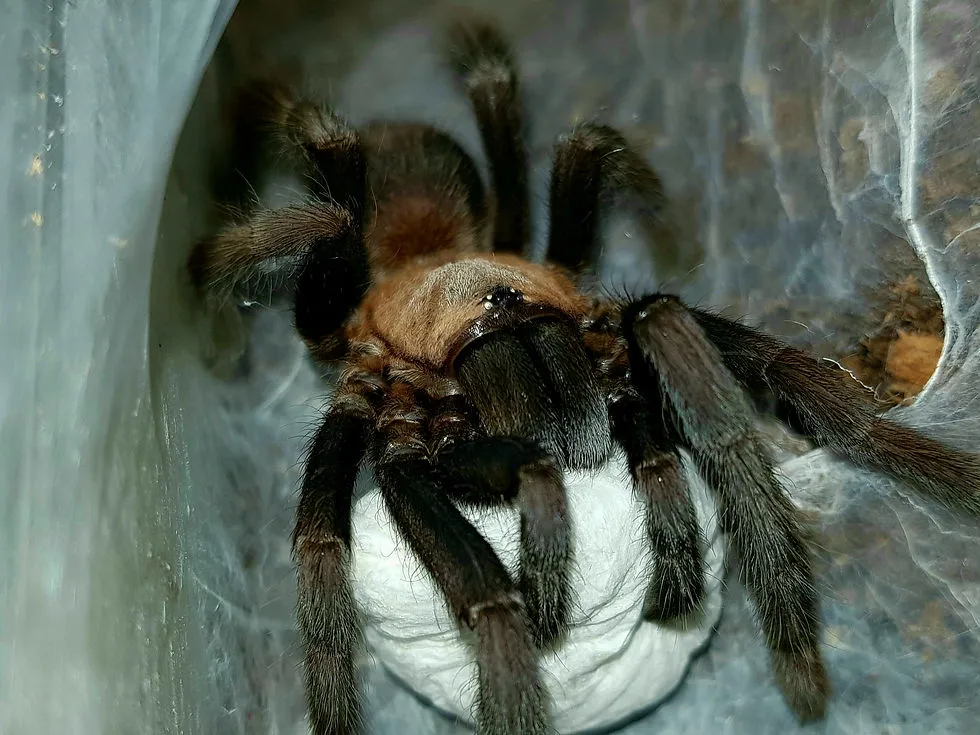
The feeding frequency for the Sp Northern Cebu Tarantula varies depending on its age and size. Spiderlings should be fed more frequently, typically two to three times per week. As they mature, the frequency can be reduced to once or twice a week. It is important to monitor the tarantula’s abdomen for fullness; a well-fed tarantula will have a slightly rounded abdomen. Overfeeding should be avoided as it can lead to health problems.
Special Considerations for Feeding
When feeding, make sure to remove any uneaten insects within 24 hours to prevent them from stressing the tarantula. Always offer fresh water in a shallow dish. Also, it is important to ensure that the insects provided are free from pesticides. The tarantula’s health will depend on the quality and consistency of its food. It is essential to offer a variety of food items to encourage optimum health.
Basic Care and Enclosure Requirements
Creating the right environment is essential for the health and well-being of your Sp Northern Cebu Tarantula. This involves setting up a suitable enclosure and maintaining proper conditions for temperature, humidity, and substrate. Replicating their natural habitat as closely as possible is a key element in successful tarantula keeping.
Enclosure Size and Setup
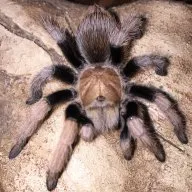
The enclosure should be appropriately sized for the Sp Northern Cebu Tarantula. A good rule of thumb is to provide an enclosure that is at least three times the tarantula’s leg span in width. For adults, a 10-gallon or 20-gallon terrarium is typically suitable. The enclosure should have a secure lid to prevent escapes. Ventilation is critical. Cross-ventilation is ideal. The enclosure must provide plenty of space and must allow the tarantula to move freely and exhibit natural behaviors.
Substrate and Decor
The substrate should be several inches deep to allow the tarantula to burrow if it chooses. A mix of coco fiber, peat moss, and a bit of vermiculite works well. This mixture retains moisture and allows the tarantula to create burrows. Decorate the enclosure with a hide, such as a piece of cork bark or a hollow log, providing the tarantula with a safe space to retreat. Adding a water dish and some fake plants can also enhance the enclosure’s aesthetic appeal and provide additional hiding places. This decor adds to the tarantula’s feeling of security.
Temperature and Humidity
The Sp Northern Cebu Tarantula thrives in a warm and humid environment, mirroring its native habitat. Maintain a temperature between 75-85°F (24-29°C). A heat mat placed on the side of the enclosure can help maintain the ideal temperature. Humidity levels should be kept around 70-80%. This can be achieved by regularly misting the enclosure with water and ensuring the substrate remains slightly moist. Use a hygrometer to monitor the humidity levels and make adjustments as necessary. The right climate is a major factor for keeping these tarantulas healthy.
Handling and Interaction
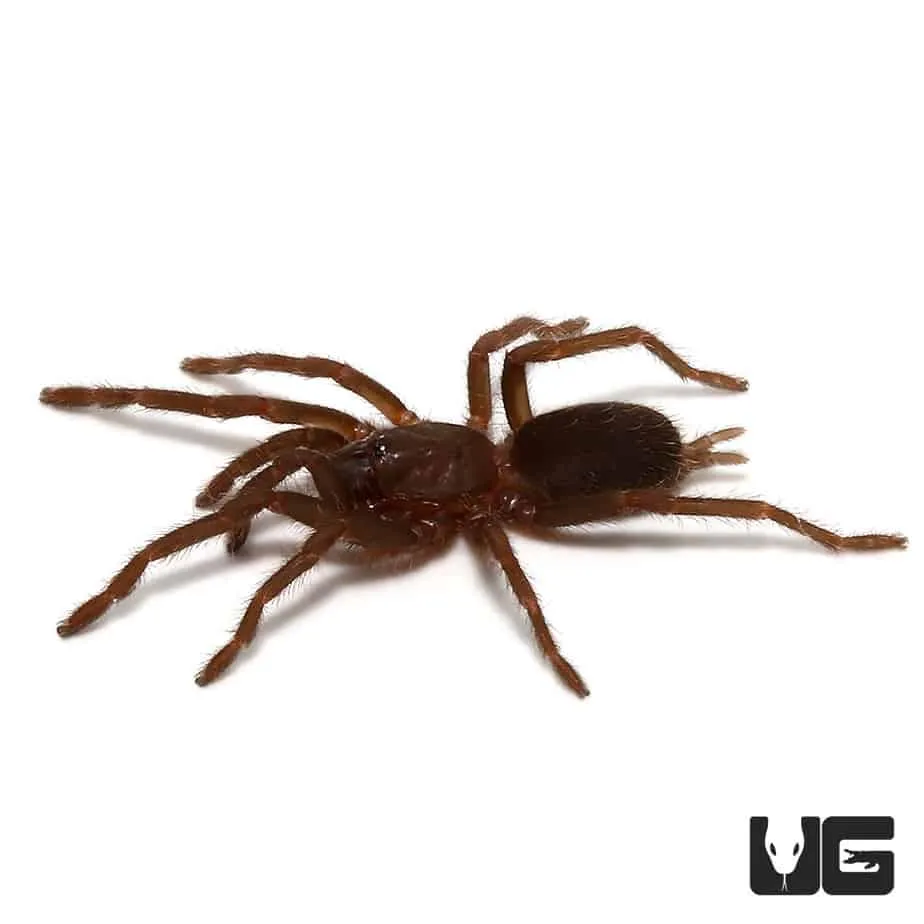
While the Sp Northern Cebu Tarantula is a fascinating species, handling them should be approached with caution. Tarantulas, in general, are not meant to be handled frequently. Understanding the correct way to interact with them will keep both the tarantula and keeper safe. Learning how to handle a tarantula requires a significant understanding of its behavior and needs.
Handling Safety
If you choose to handle your Sp Northern Cebu Tarantula, do so with extreme caution and only when necessary, such as for enclosure maintenance. Always handle the tarantula close to the ground to minimize the risk of injury if it falls. Use a soft brush or a container to gently coax the tarantula, rather than grabbing it directly. Be patient, gentle, and aware of its behavior, as stress can trigger a defensive response. Always wash your hands thoroughly before and after handling the tarantula.
Things to Avoid
Never handle a Sp Northern Cebu Tarantula if you are inexperienced. Avoid sudden movements and loud noises, as these can startle the tarantula. Do not handle the tarantula if it is close to molting, as they are especially vulnerable during this time. Avoid any direct contact with the urticating hairs that some tarantulas may have. These hairs can cause irritation. Always observe the tarantula’s behavior and respect its space, and never force interaction.
Lifespan and Reproduction
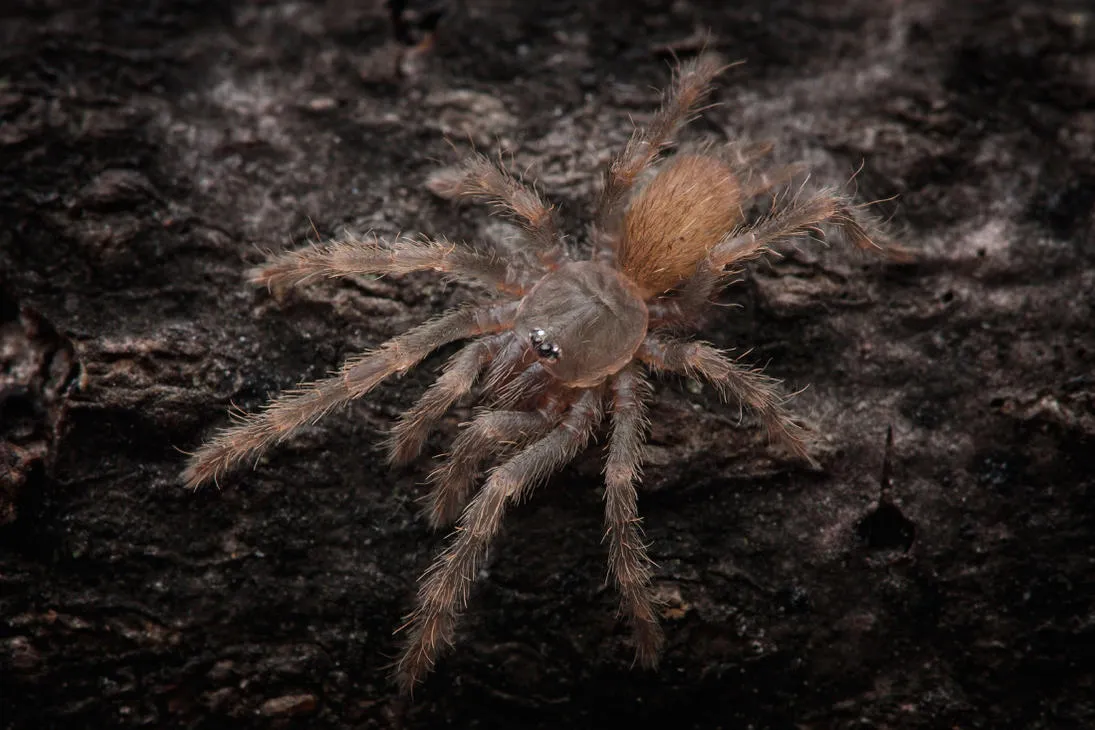
Understanding the lifespan and reproductive behaviors of the Sp Northern Cebu Tarantula is crucial for responsible ownership. These factors will influence the long-term care and management of the species. Planning will give the owner a clear idea of what they can expect in terms of the tarantula’s life cycle and care needs.
Lifespan
The lifespan of the Sp Northern Cebu Tarantula varies between males and females. Females can live for a long time, often 10 to 15 years or even longer, under optimal conditions. Males, however, typically have a shorter lifespan, usually 3 to 5 years. The tarantula’s life expectancy is influenced by factors such as genetics, care, and environmental conditions. Female tarantulas’ long lifespans make them a more long-term pet option.
Reproduction
Reproduction in the Sp Northern Cebu Tarantula involves a complex mating process. If you are interested in breeding, research the specific requirements and considerations for tarantula breeding. After mating, the female will lay an egg sac containing hundreds of eggs. The spiderlings will hatch and begin to develop. Breeding tarantulas is a complex process that requires experience and a suitable environment to ensure the success of the breeding project.
Conservation Status and Threats
It is important to consider the conservation status of the Sp Northern Cebu Tarantula. Understanding the threats they face will guide responsible pet ownership and contribute to their preservation.
Threats to their survival
The Sp Northern Cebu Tarantula faces several threats in its natural habitat. Habitat loss due to deforestation and human development poses a significant challenge. Collection for the pet trade can also impact wild populations. Understanding and mitigating these threats is essential for preserving the tarantula’s survival. Supporting conservation efforts, purchasing captive-bred specimens, and advocating for sustainable practices can all contribute to the species’ long-term survival.
Conclusion
The Sp Northern Cebu Tarantula is a captivating and fascinating species that can be a rewarding pet for responsible keepers. By understanding its origin, care requirements, and conservation status, you can ensure that you provide the best possible care for this amazing arachnid. Enjoy the beauty and wonder of owning a Sp Northern Cebu Tarantula, and always prioritize its well-being and preservation. Proper research and commitment are key to a positive experience with this remarkable creature.
